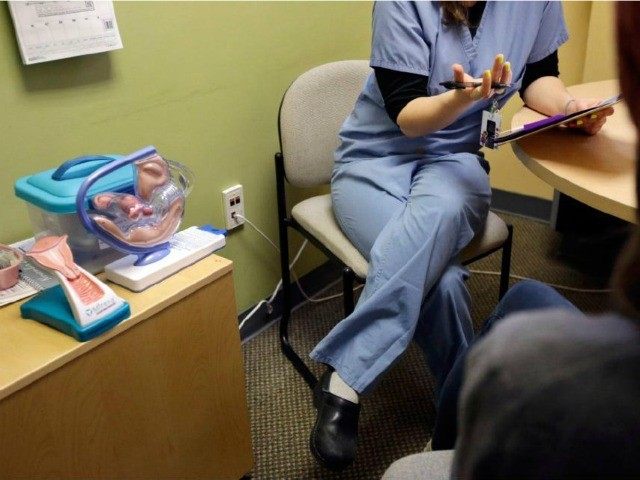Is there a constitutional right to operate sub-standard abortion clinics?
That, essentially, is what the Supreme Court will determine when it hears Whole Women’s Health v. Cole, the case brought against Texas by abortionists who don’t want to spend money to help women survive abortions.
Roe v. Wade, along with its companion case Doe v. Bolton, infamously instituted a regime of abortion on demand in the United States in 1973. Even while weaving a “right” to abortion out of whole cloth, however, the justices in those cases still held:
The State has a legitimate interest in seeing to it that abortion, like any other medical procedure, is performed under circumstances that insure maximum safety for the patient. This interest obviously extends at least to the performing physician and his staff, to the facilities involved, to the availability of after-care, and to adequate provision for any complication or emergency that might arise.
In 1992, the Court further recognized that “the State has legitimate interests from the outset of the pregnancy in protecting the health of the woman.”
Today, however, “adequate provision for any complication or emergency” suffered by women is not the reality at most abortion clinics. And for too many women and girls, the results are deadly.
Last year, Lakisha Wilson, 22, received an abortion at a clinic in Ohio during which she bled profusely and went into shock. She subsequently suffered cardiac arrest and fatal brain damage from lack of oxygen.
Ms. Wilson’s abortion was performed on the third floor of a building with only a small elevator to provide access for a gurney. That elevator malfunctioned on the day Ms. Wilson suffered her complications, delaying the arrival of emergency medical technicians. When the EMTs finally reached her, they allegedly found Ms. Wilson with a pediatric oxygen mask, not a full adult mask, strapped to her face. Her IV had apparently been pulled out accidentally in the cramped surgical room.
The medics were unable to provide full emergency treatment for Ms. Wilson in the operating room, such as intubation, because to do so would have required that she lie flat on the gurney. The building’s elevator, however, was too small to accommodate a flat gurney. Care had to be delayed until Ms. Wilson reached the lobby.
The clinic whose facilities prevented swift emergency care for the late Ms. Wilson is still in business. It advertises “safe, compassionate abortion care.”
Karnamaya Mongar was an adult victim of Kermit Gosnell’s “house of horrors” in Philadelphia. Gosnell, of course, is the abortionist who was convicted of murdering babies born alive during abortions. He stabbed them in the neck and left them to die.
Mrs. Mongar’s demise was unintentional, but just as real. She received an improper dosage of anesthesia. According to the Philadelphia Grand Jury’s report:
Mrs. Mongar’s slim chances of survival were seriously hampered because it was exceedingly difficult for responders to get her to the waiting ambulance. The emergency exit was locked. Gosnell sent Ashley to the front desk to look for the key, but she could not find it. Ashley told us that a firefighter needed to cut the lock, but “It took him awhile … because the locks is old.” She testified that it took “twenty minutes, probably trying to get the locks unlocked….After cutting the locks, responders had to waste precious more minutes trying to maneuver through the narrow cramped hallways that could not accommodate a stretcher.
The abortion lobby, of course, repeatedly complains that it’s unnecessary to have hallways wide enough to accommodate gurneys. Such requirements, abortion advocates argue, are only meant to make life more difficult and expensive for abortion providers.
No, such requirements are meant to make continued life more possible for women who receive injuries from botched abortions.
The concern of those who spend their lives terminating unborn babies’ lives is not the health or well-being of women who have abortions – it’s making sure that a steady stream of patients go through their doors as quickly and inexpensively as possible so as to maximize profits.
It follows, then, that the abortionists’ emphasis in their lawsuit against Texas is access – making sure that they can stay in business without having to upgrade their facilities. The issue, they say, is not what happens to the women who suffer after botched abortions, it’s how many miles they have to drive to reach a clinic. To abortionists, it’s not how well or how poorly women are treated at their clinics that counts, it’s making sure they get there… with their cash.
In the ensuing months, we’ll be hearing a lot about “undue burdens” on women who seek abortions. The abortion lobby says that Texas’s laws place such burdens on women seeking abortions. What abortionists mean, however, is that such laws cut into their profits. They resent having to spend money to handle medical difficulties that may arise.
If we’re going to talk about undue burdens, then, let’s talk about the woman who is hemorrhaging from her abortion and whose life is placed at risk because her clinic refuses to prepare for emergencies.
It’s time for the Supreme Court to recognize that inadequate facilities and care constitute undue burdens imposed on women by abortionists.
Fr. Frank Pavone is National Director, Priests for Life

COMMENTS
Please let us know if you're having issues with commenting.